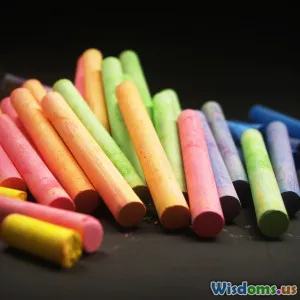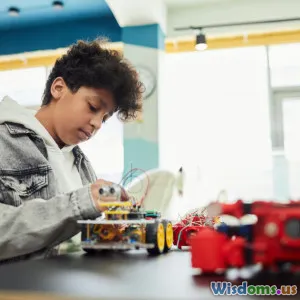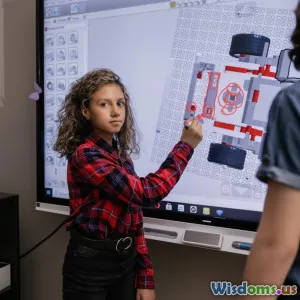
Five Surprising Benefits of Artistic Exercises in Classrooms
8 min read Explore five unexpected benefits of integrating artistic exercises in classrooms that enhance students’ cognitive, emotional, and social development. (0 Reviews)
Five Surprising Benefits of Artistic Exercises in Classrooms
Integrating artistic exercises into classroom learning isn’t just about encouraging creativity; it’s a transformative approach that impacts students’ cognitive development, emotional well-being, and social skills in profound and often surprising ways. Educators worldwide are witnessing how incorporating art activities can foster deeper engagement, improve academic outcomes, and nurture essential life skills. But what exactly makes artistic exercises so beneficial — and how can schools harness these advantages effectively?
This article explores five remarkable and research-backed benefits of artistic activities in educational settings that go beyond traditional expectations.
1. Enhancing Cognitive Development and Problem-Solving Skills
Artistic exercises uniquely stimulate parts of the brain involved in visual-spatial skills, reasoning, and creative problem solving. When students participate in drawing, sculpting, or performing arts, they engage both hemispheres of the brain, fostering a synergy that promotes higher-order thinking.
The Science Behind Art and Cognition
Neuroscientific studies have demonstrated increased activity in the prefrontal cortex — responsible for complex planning and personality development — when children engage in art-making. A 2014 study published in the Journal of Learning Disabilities found substantial improvements in children’s visual comprehension and fine motor skills after routine artistic activities.
Real-World Example: Harvard Project Zero
Harvard's Project Zero research shows students who regularly engage in arts-integrated curricula demonstrate superior abilities in analyzing complex concepts. For instance, art helps students interpret ambiguous visual information, an everyday skill critical in fields like engineering and medicine. This cognitive flexibility can translate into better academic results, especially in STEM disciplines.
2. Boosting Emotional Intelligence and Mental Health
Artistic exercises in classrooms act as powerful outlets for emotional expression, helping students develop self-awareness and empathy while reducing stress and anxiety.
Emotional Processing Through Art
Psychologist Dr. Cathy Malchiodi emphasizes that art enables children to externalize and process difficult emotions safely. Instead of suppressing feelings, students channel them into creative projects, aiding emotional regulation and communication.
Benefits Supported by Research
A 2019 study published in The Journal of Positive Psychology demonstrated that children engaging in regular artistic activities experienced lower cortisol levels (a stress hormone) and showed improved mood and resilience. These effects are crucial as many students face increasing mental health challenges in today's educational environments.
Practical Classroom Insight
Teachers incorporating journaling with visual art, dramatic role play, or music sessions often report calmer classrooms with fewer behavioral incidents. For example, Chicago's Youth Empowerment Program integrates art therapy into school curricula, noting increased student attendance and participation.
3. Fostering Social Skills and Collaborative Learning
Art projects often involve group work, inviting cooperation, negotiation, and communication among peers — essential skills for overall social development and future workplace success.
Collaboration Through Art
Whether co-creating a mural or performing a group dance, students learn to listen to others' perspectives, develop patience, and resolve conflicts constructively. Artistic collaboration nurtures a democratic culture and cultivates mutual respect.
Case Study: The STEAM Approach
Many schools adopting STEAM (Science, Technology, Engineering, Art, Math) curricula report significant increases in teamwork and problem-solving effectiveness. For example, a group designing a robotics project with an artistic component must merge technical skills with imagination, encouraging diverse talents to flourish and promoting stronger peer bonds.
4. Improving Academic Performance Across Subjects
Contrary to the outdated notion that art distracts from core academics, evidence shows that artistic engagement enhances performance in reading, math, and science.
Linking Art to Literacy and Numeracy
Music education, for example, enhances patterns recognition, a skill equally vital in math and language. Similarly, drama exercises improve reading comprehension and vocabulary by immersing students in storytelling and character analysis.
Statistical Evidence
A nationwide survey by the Arts Education Partnership revealed students with high arts participation typically score 15% better on standardized tests. They also have higher graduation rates, suggesting art cultivates discipline, focus, and motivation—habits that benefit all academic learning.
Innovative Programs Exemplifying Success
The Chicago Arts Partnerships in Education (CAPE) initiative integrates artist residencies with traditional teaching. CAPE students meaningfully outperform peers on algebra and literacy benchmarks, showcasing how embedded creativity elevates academic achievement.
5. Encouraging Innovation and Future-Ready Skills
Artistic experiences cultivate creativity — arguably the top sought-after skill by employers in the 21st century. Beyond rote memorization, courts of tomorrow prize students who can innovate and adapt.
Preparing Students for an Uncertain Future
The World Economic Forum’s Future of Jobs Report (2023) emphasizes creativity, complex problem-solving, and critical thinking as vital to employability. Artistic exercises naturally embed these proficiencies.
From Classroom to Career
Programs like Design Thinking in schools use art principles to redefine problem-solving, encouraging students to prototype, test, and refine ideas actively. Such training nurtures an innovative mindset essential across sectors from technology to entrepreneurship.
Conclusion: Embracing Artistic Exercises as Essential Classroom Tools
Art is no longer a peripheral educational activity but a multifaceted catalyst enriching cognition, mental well-being, social integration, academic success, and innovative capacity. As research and real-world evidence affirm, integrating artistic exercises within classrooms creates more holistic learning experiences, preparing students not only academically but also emotionally and socially for the future.
Teachers, administrators, and policymakers should thus champion art integration, expanding resources and training for educators to utilize these interventions meaningfully. Doing so ensures education evolves to meet modern demands — fostering not just knowledge, but adaptable, empathetic, and creative human beings.
The transformative potential of art in education lies waiting to be tapped. The question is no longer why, but how swiftly and effectively we can weave artistry into the fabric of daily learning.
References and Further Reading:
- Eisner, E. The Arts and the Creation of Mind. Yale University Press.
- Winner, E., & Cooper, M. (2000). Art and Ability. Vision Research.
- Hetland, L. et al. (2007). Studio Thinking: The Real Benefits of Visual Arts Education. Teachers College Press.
- World Economic Forum, Future of Jobs Report 2023.
- Arts Education Partnership, Arts and Academic Achievement Report, 2015.
Rate the Post
User Reviews
Other posts in Emotional Intelligence
Popular Posts


















